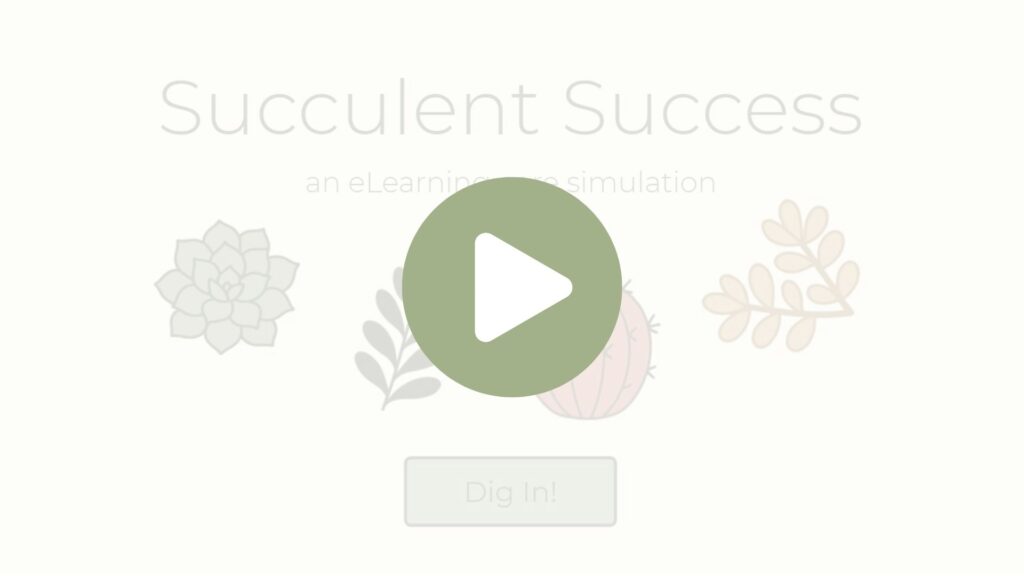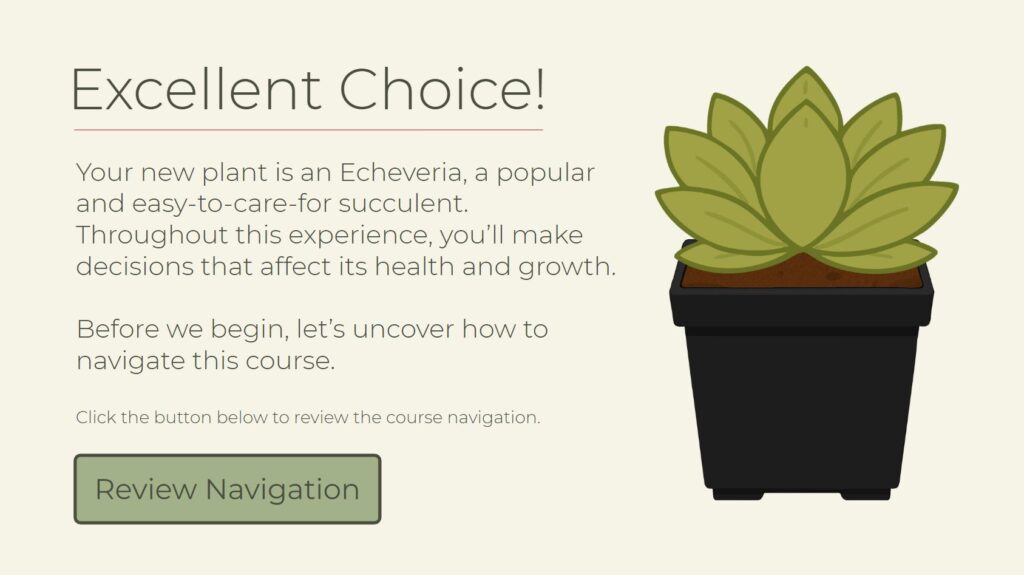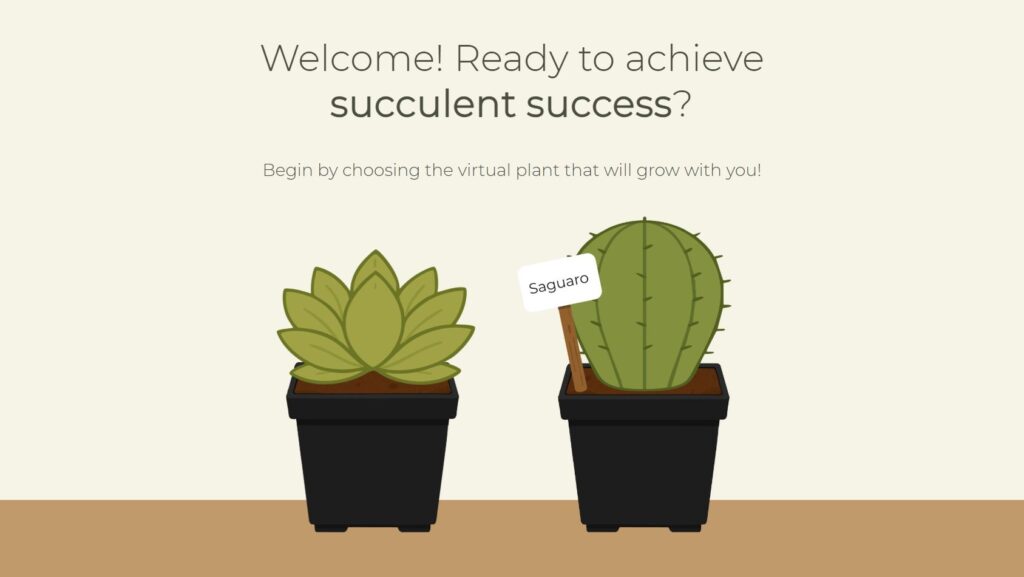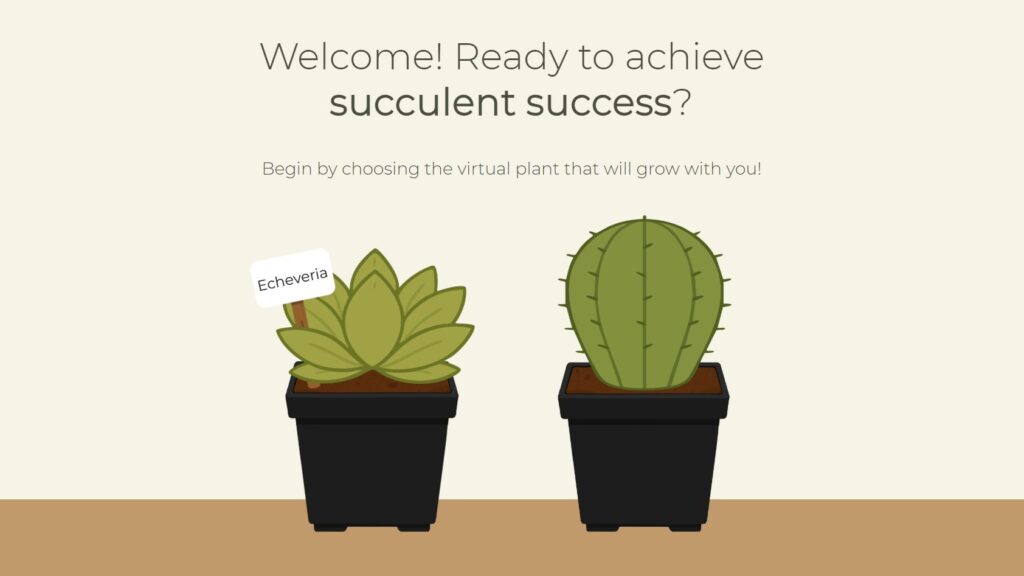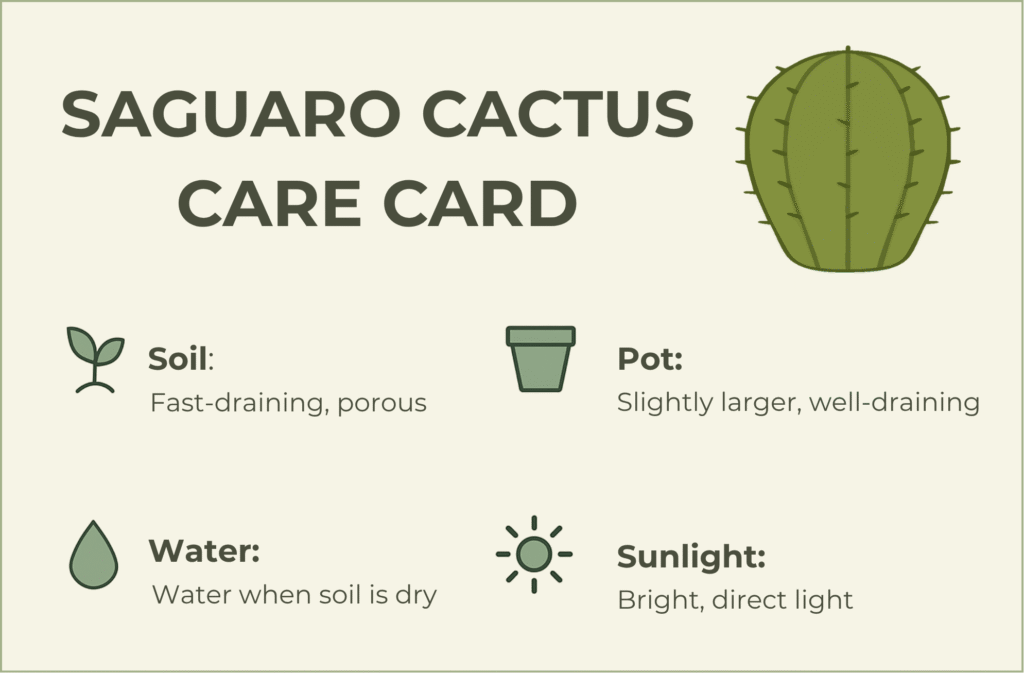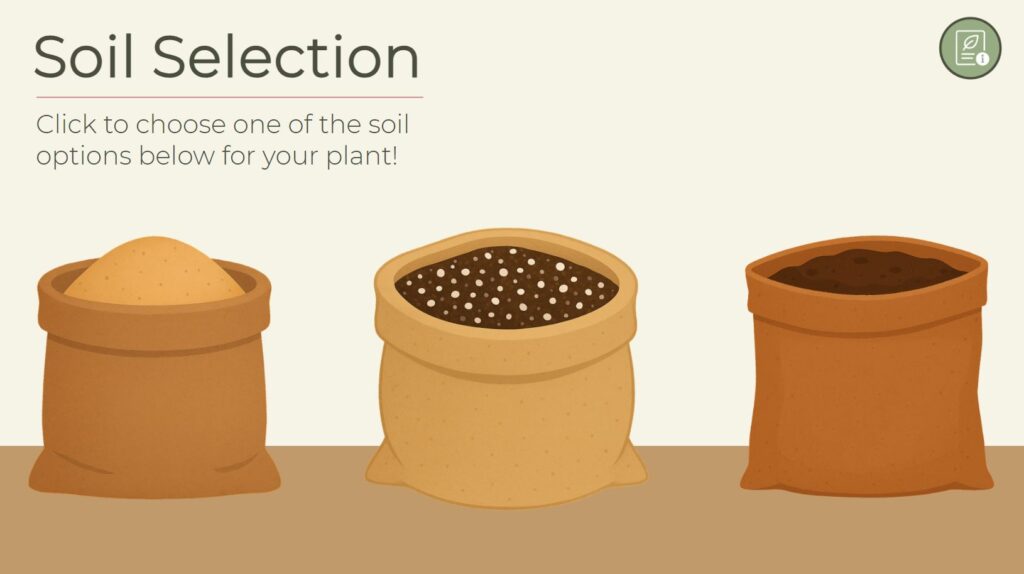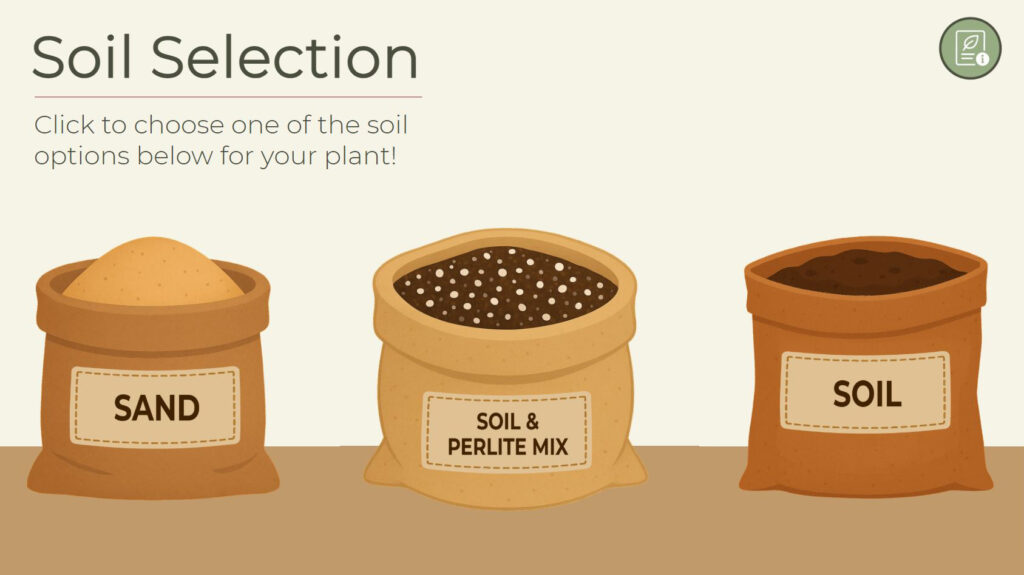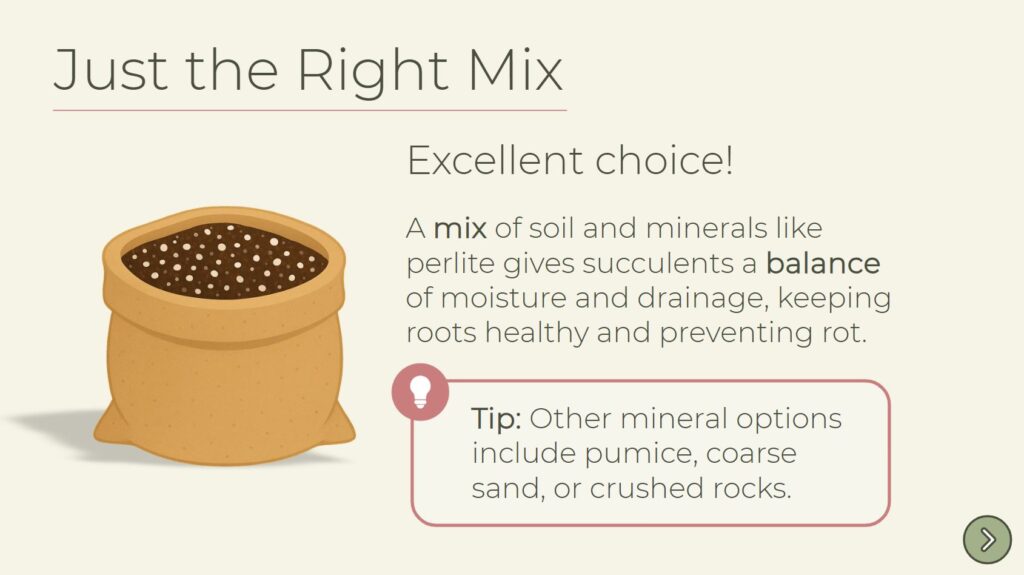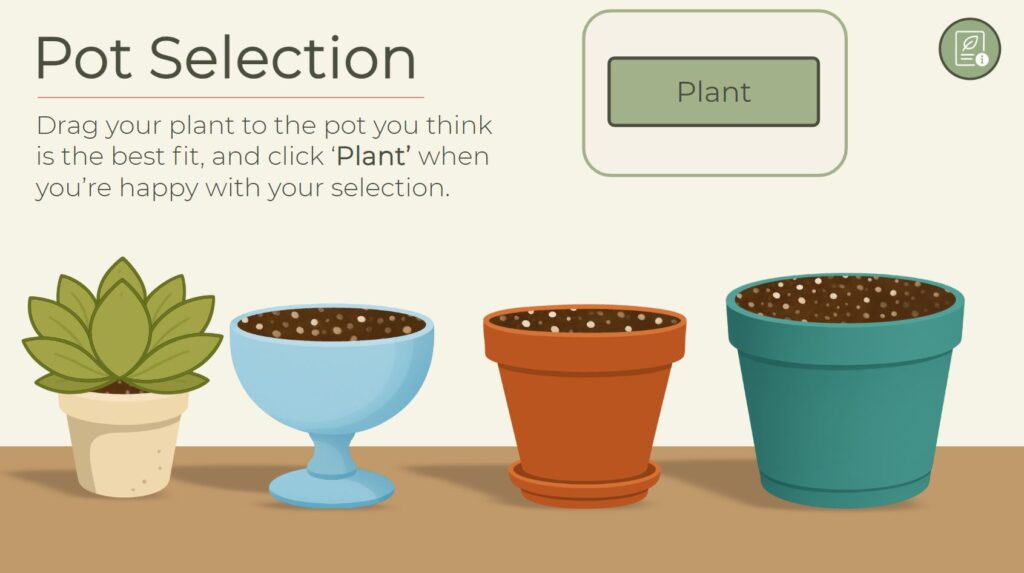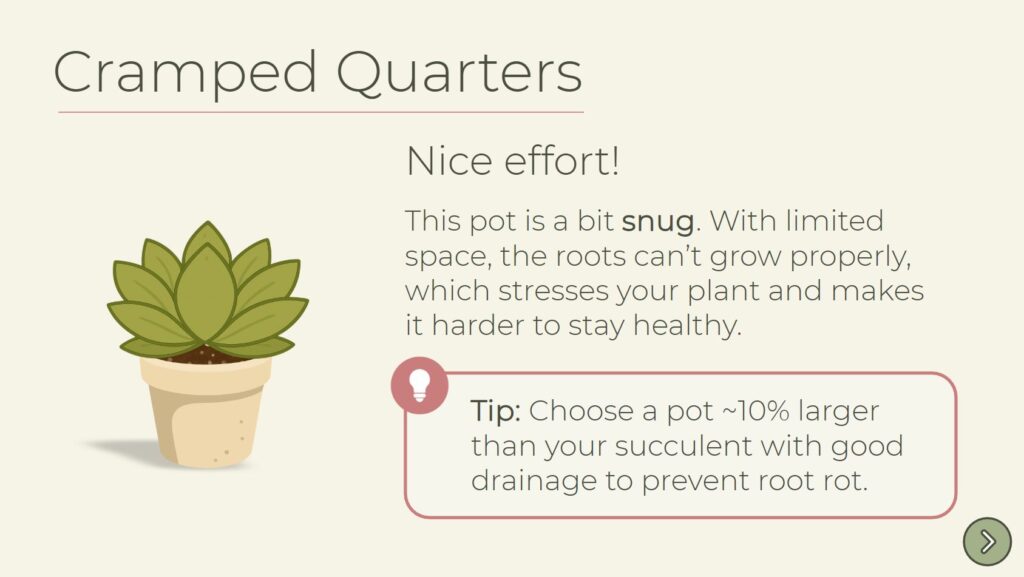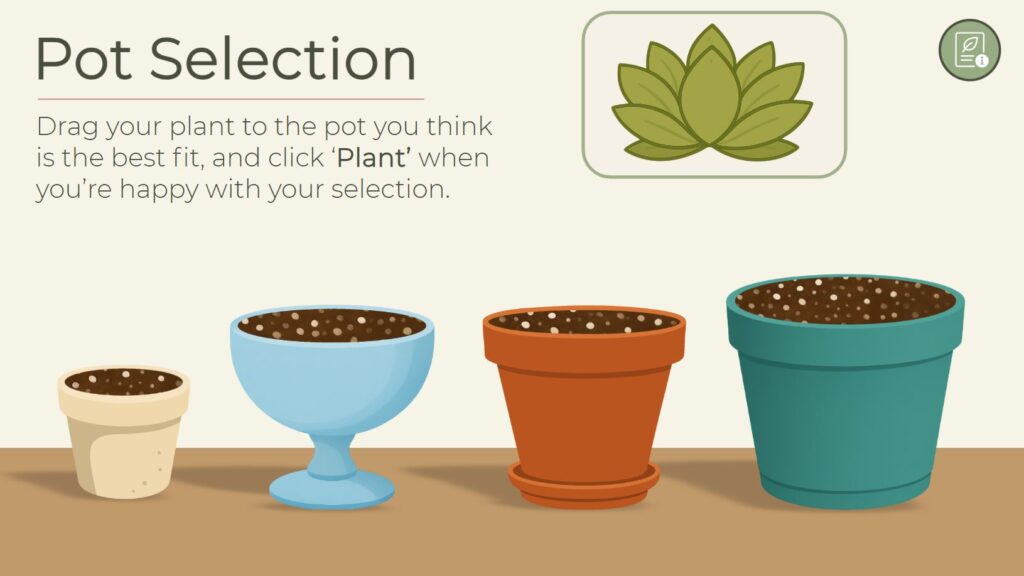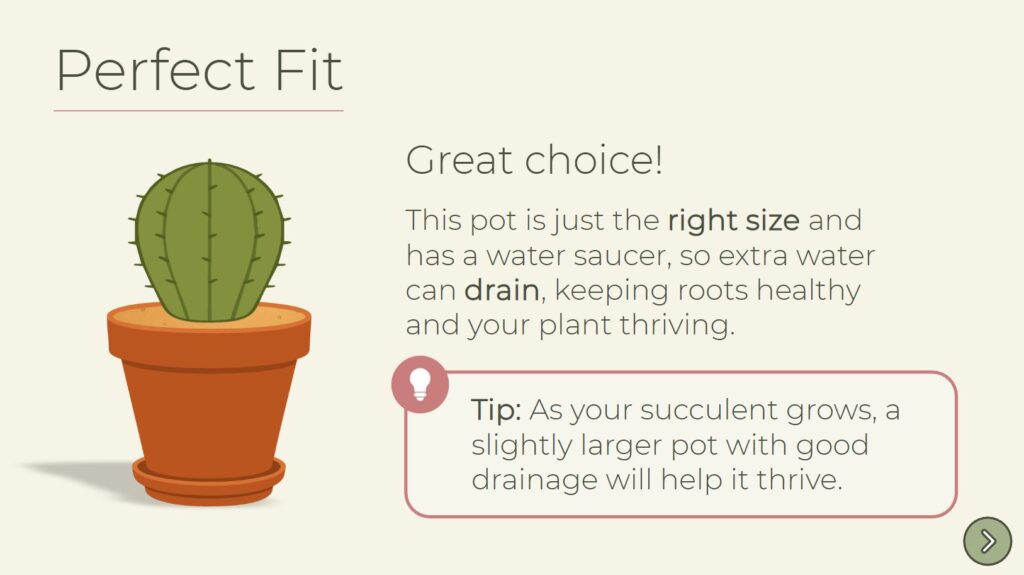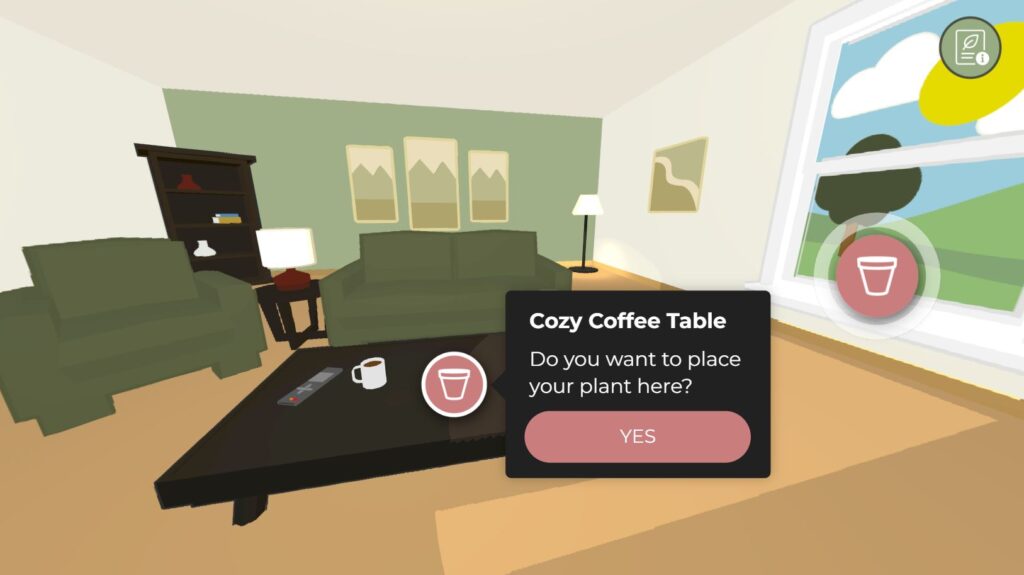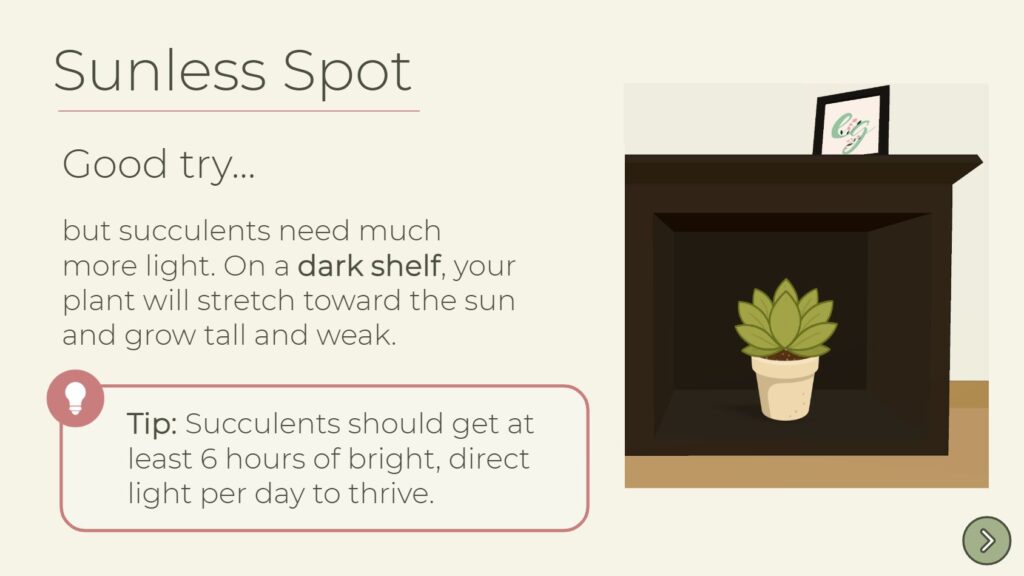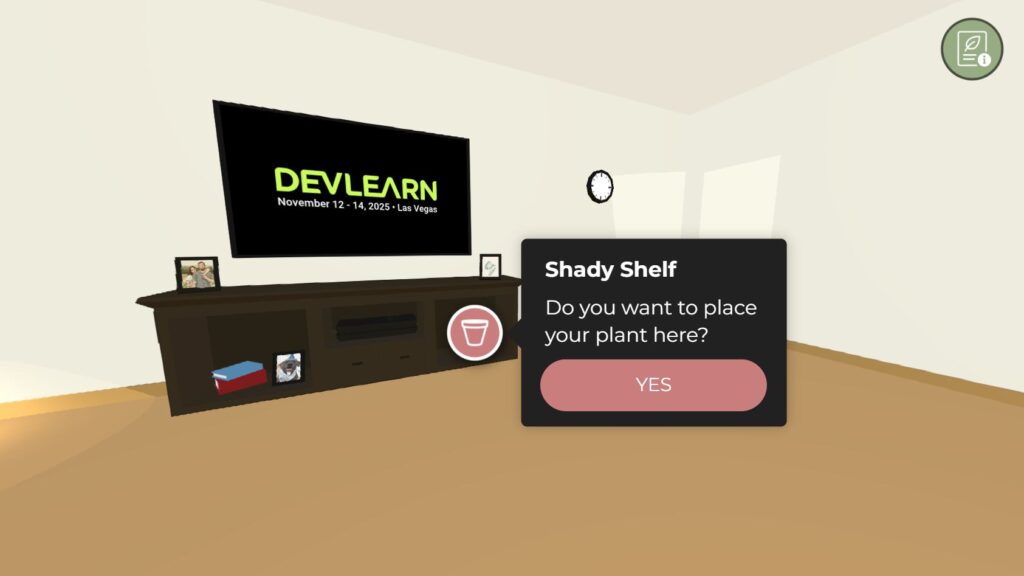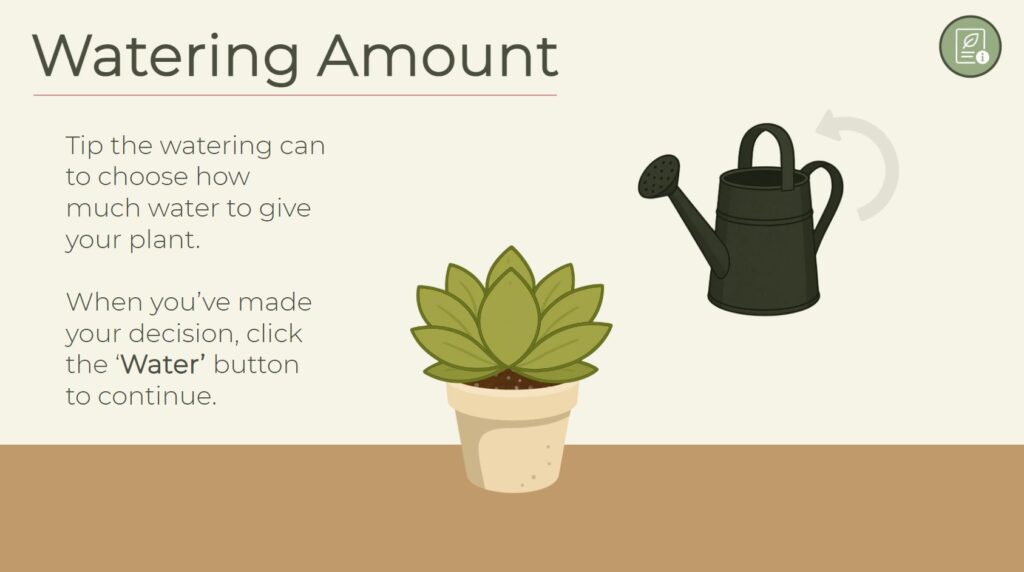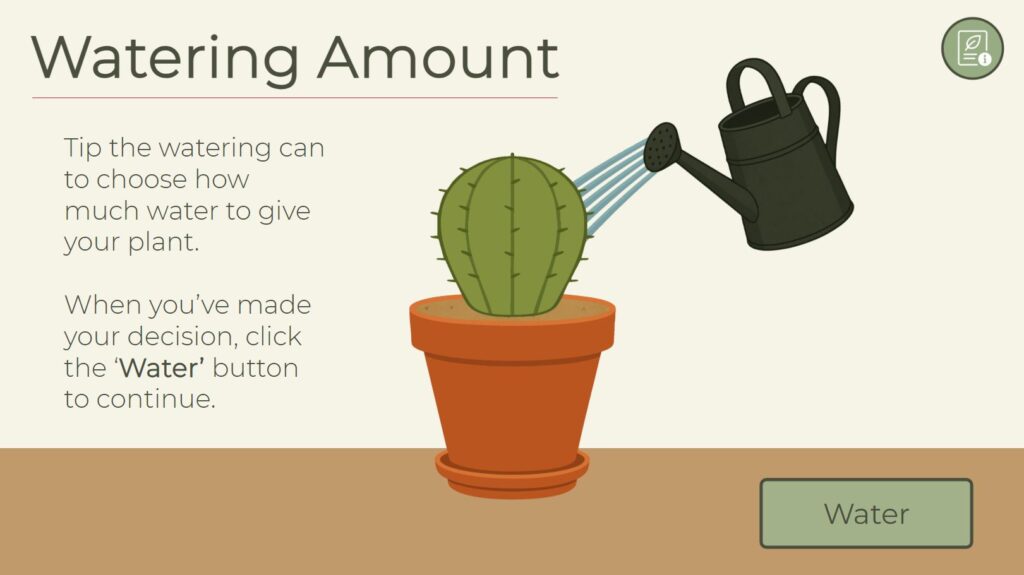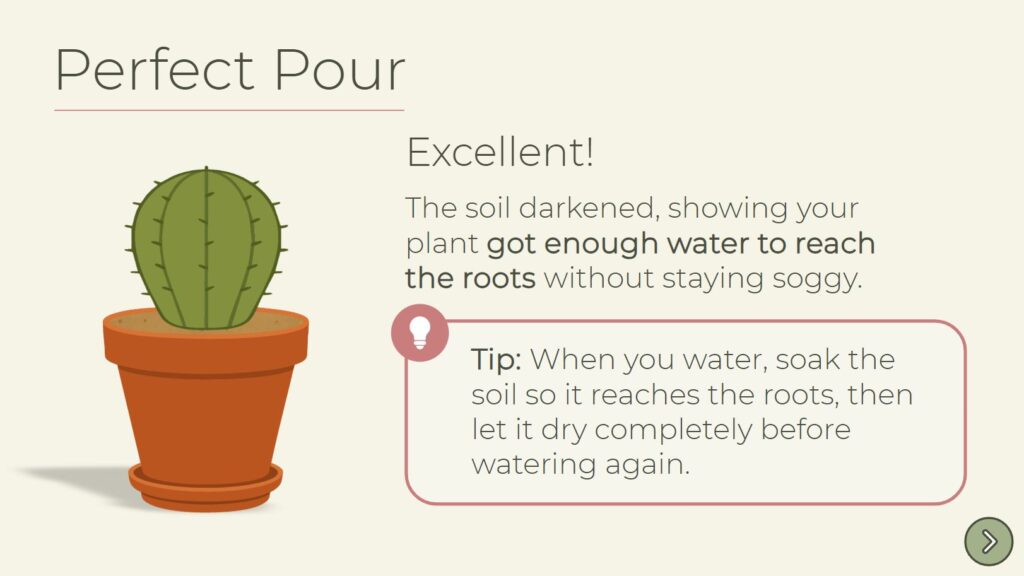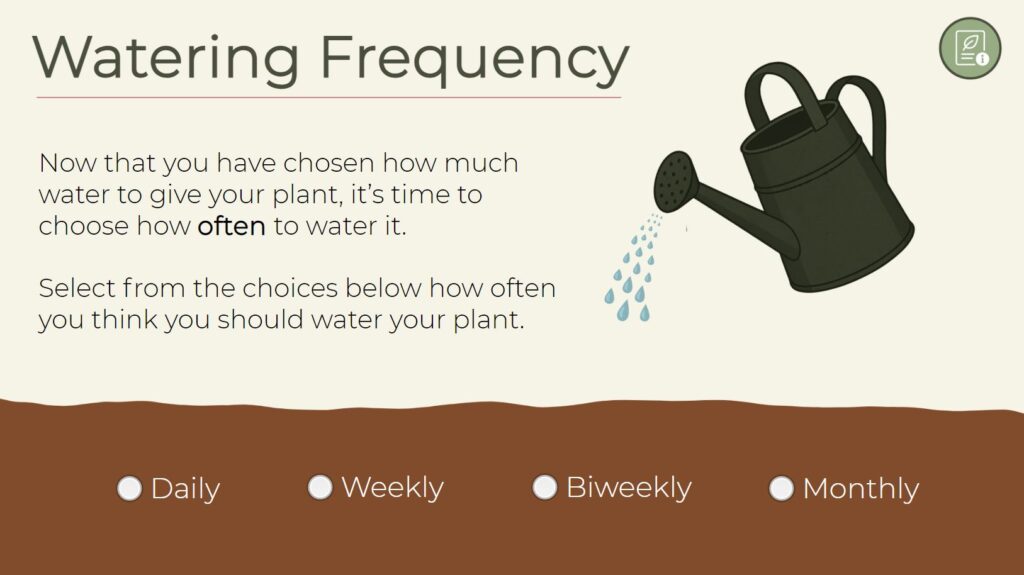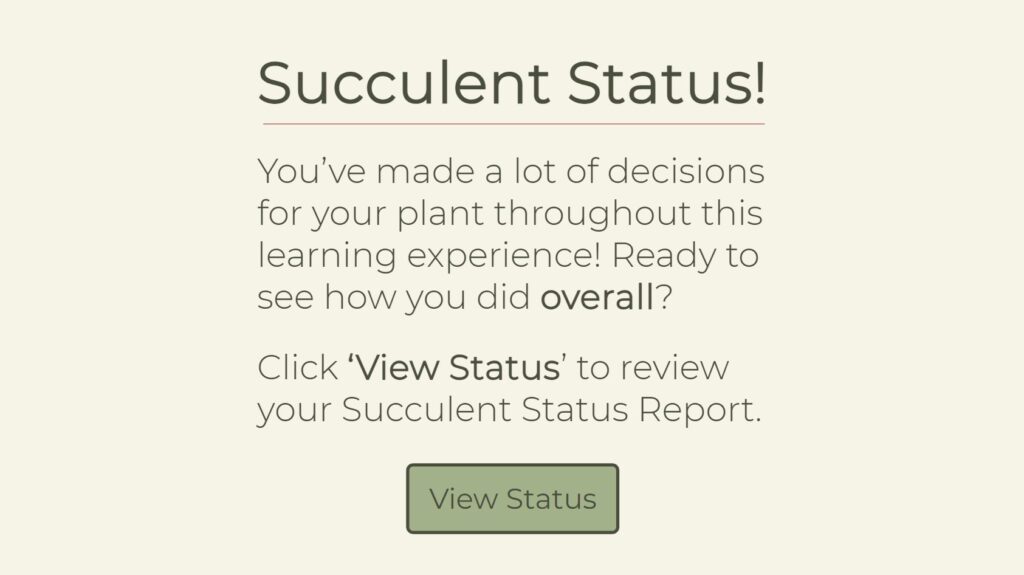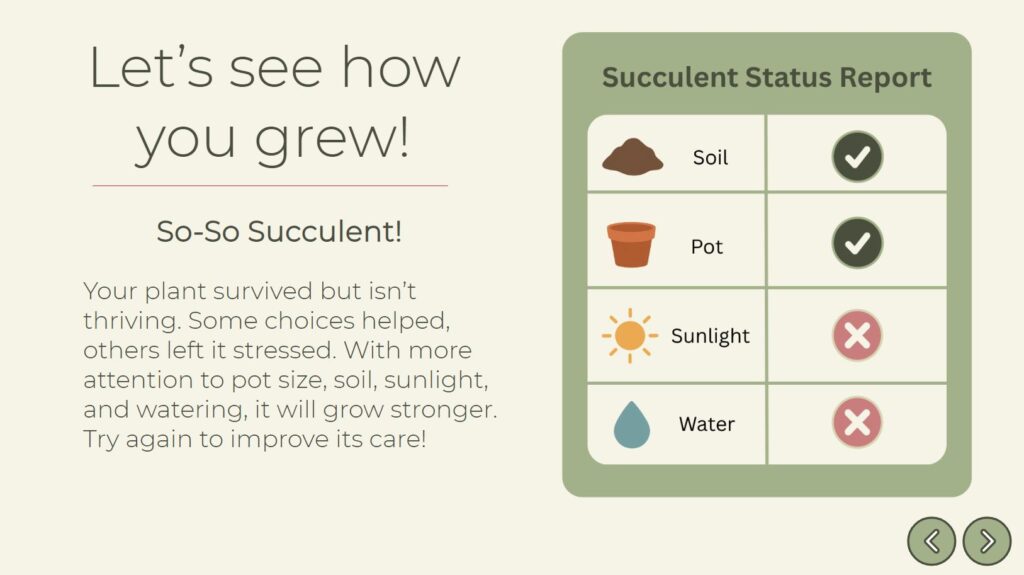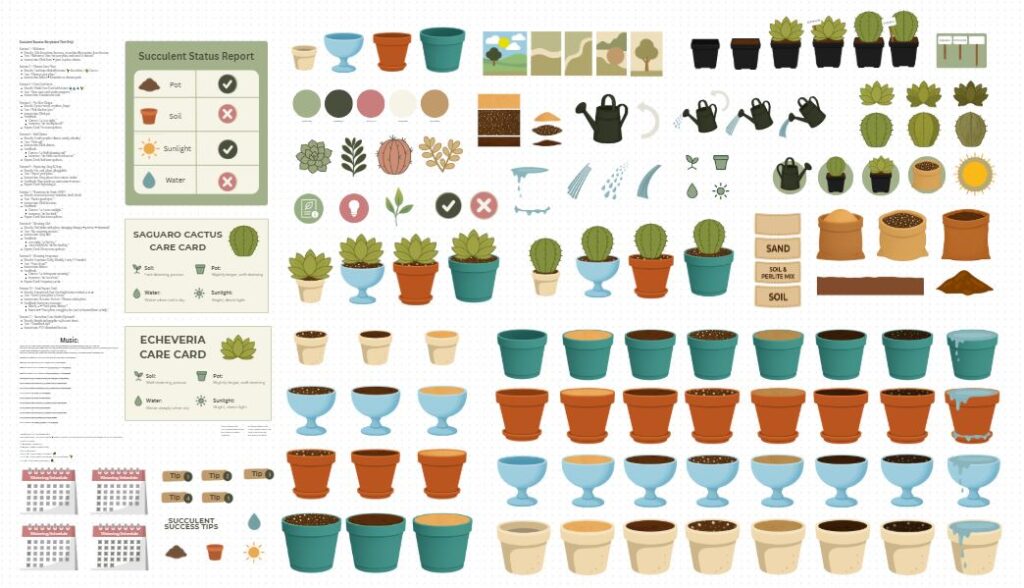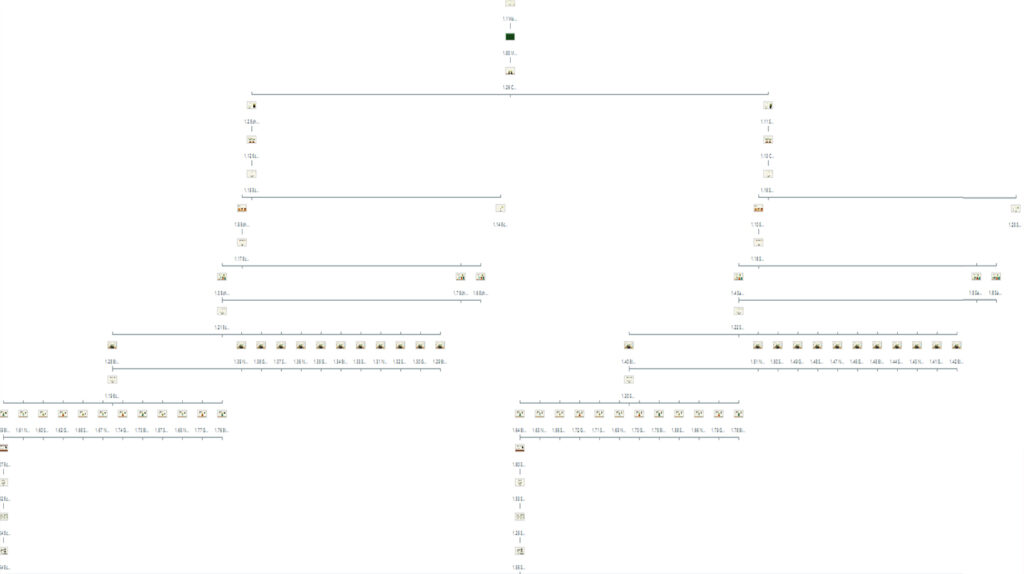Succulent Success:
An eLearning Experience
🌱 About the Project
Many people struggle to keep succulents alive. Therefore, the goal of this project is to provide a safe, low-stakes environment for beginners or new succulent owners to experiment with real-world care decisions such as soil type, pot size, sunlight placement, and watering without risking a real plant. This course combines engagement, interactivity, and feedback in an immersive, hands-on format that teaches through doing and helps build confidence in succulent care.
Tools Used
- Articulate Storyline
- Adobe Illustrator
- Adobe Photoshop
- Canva
- Unity
- Vyond
- Pixabay
🌿 Plant Selection
Learners begin by choosing between two virtual succulents: an Echeveria or a Saguaro Cactus. This choice personalizes the experience, as the selected plant accompanies them throughout the course. Each care decision the learner makes affects the plant’s overall well-being, and at the end of the course, they see how their plant is doing based on those choices.
🌿 Plant Selection
Learners begin by choosing between two virtual succulents: an Echeveria or a Saguaro Cactus. This choice personalizes the experience, as the selected plant accompanies them throughout the course. Each care decision the learner makes affects the plant’s overall well-being, and at the end of the course, they see how their plant is doing based on those choices.
📇 Care Card & Feedback
After choosing a plant, learners are presented with its care card, which provides basic and intentionally vague instructions for soil, pot, sunlight, and watering. This card guides learners’ choices without directly giving the correct answers, allowing them to experiment and see the consequences of their decisions. The care card remains available throughout the course, so learners can consult it whenever they need guidance before making a care decision. It serves as both a learning aid and a quick reference tool, reinforcing key takeaways. After each choice, learners receive feedback indicating whether the decision was beneficial for their plant.
🌾 Soil Selection
After choosing their plant, the first care decision learners make is selecting soil so their plant can be repotted. They can choose from three options: sand, a soil and perlite mix, or plain soil. Learners may consult their care guide before making a choice and receive immediate feedback upon selection, where they learn that the right mix allows for proper drainage and prevents root rot, both of which are essential for long-term plant health.
🌾 Soil Selection
After choosing their plant, the first care decision learners make is selecting soil so their plant can be repotted. They can choose from three options: sand, a soil and perlite mix, or plain soil. Learners may consult their care guide before making a choice and receive immediate feedback upon selection, where they learn that the right mix allows for proper drainage and prevents root rot, both of which are essential for long-term plant health.
⚱️ Pot Selection (Drag-and-Drop)
⚱️ Pot Selection
(Drag-and-Drop)
With their soil chosen, learners move on to a drag-and-drop activity to complete the repotting of their plant. There are four pots to choose from, and learners can drag and drop their plant onto each one to see if it is a good fit. One pot is meant to be too small, another is a good fit but has no drainage, one is a perfect fit with drainage, and the last is too large for the plant. Again, learners receive immediate feedback on their choice and can see their plant repotted in the selected pot with the soil they chose earlier.
🌞 Placement (360° Interaction)
🌞 Placement
(360° Interaction)
With their plant repotted, it is time to find it a new home with adequate sunlight. In this immersive 360° photo scene, learners explore a bright, cozy room to find the ideal spot for their plant. They can pan around the space to examine locations such as a windowsill, a coffee table, and a dark shelf, each offering different lighting levels. This activity simulates the real-world challenge of finding the right environment for a succulent and helps learners understand the differences between direct sunlight, indirect sunlight, and no sunlight in a visually engaging way.
🌞 Placement (360° Interaction)
🌞 Placement
(360° Interaction)
With their plant repotted, it is time to find it a new home with adequate sunlight. In this immersive 360° photo scene, learners explore a bright, cozy room to find the ideal spot for their plant. They can pan around the space to examine locations such as a windowsill, a coffee table, and a dark shelf, each offering different lighting levels. This activity simulates the real-world challenge of finding the right environment for a succulent and helps learners understand the differences between direct sunlight, indirect sunlight, and no sunlight in a visually engaging way.
💦 Watering
(Dial Interaction)
💦 Watering (Dial Interaction)
Next, learners experiment with how much water to give their plant using an interactive watering can dial. They can tip the watering can to pour too little, just the right amount, or too much water onto their plant, each choice triggering immediate visual reactions. Engaging sound effects make the interaction feel even more realistic and help learners understand how small changes in watering can have a big impact on plant health.
💧 Water Frequency
Now that learners have chosen how much water to give their plant, the final decision is how often to water it, using a poll with four options: daily, weekly, biweekly, and monthly. This segment introduces timing and routine, showing that there is no single rule for watering succulents. Instead, they thrive when allowed to dry completely between waterings and are watered only when showing signs of thirst. The activity emphasizes that under-watering is generally safer than over-watering.
💧 Water Frequency
Now that learners have chosen how much water to give their plant, the final decision is how often to water it, using a poll with four options: daily, weekly, biweekly, and monthly. This segment introduces timing and routine, showing that there is no single rule for watering succulents. Instead, they thrive when allowed to dry completely between waterings and are watered only when showing signs of thirst. The activity emphasizes that under-watering is generally safer than over-watering.
🌸 Final Status Report
At the end of the experience, learners receive an overall succulent status report that visually shows which care choices they got right out of soil, pot, sunlight, and watering, and summarizes how their plant is doing overall as a result of those choices. Learners can then restart the course to experiment with different decisions or try a different plant. They can also download a “Succulent Success” infographic as a printable reminder of best practices. This approach allows learners to continue interacting with the content until they feel confident and provides a lasting resource for continued succulent success.
🎨 Design & Development
The project began with a loose outline that evolved into a detailed design document outlining learning objectives, content, and instructional strategies. A visual whiteboard was created to house the color palette and assets, ensuring consistency throughout development. A decision was made not to include a menu button or allow learners to go back, in order to simulate real-life decisions with a plant, where actions cannot be undone and have a direct impact on its health. The finished course combines Articulate Storyline interactions, Vyond animation, and immersive sound effects to create a learning experience that is both educational and fun.
🎨 Design & Development
The project began with a loose outline that evolved into a detailed design document outlining learning objectives, content, and instructional strategies. A visual whiteboard was created to house the color palette and assets, ensuring consistency throughout development. A decision was made not to include a menu button or allow learners to go back, in order to simulate real-life decisions with a plant, where actions cannot be undone and have a direct impact on its health. The finished course combines Articulate Storyline interactions, Vyond animation, and immersive sound effects to create a learning experience that is both educational and fun.
